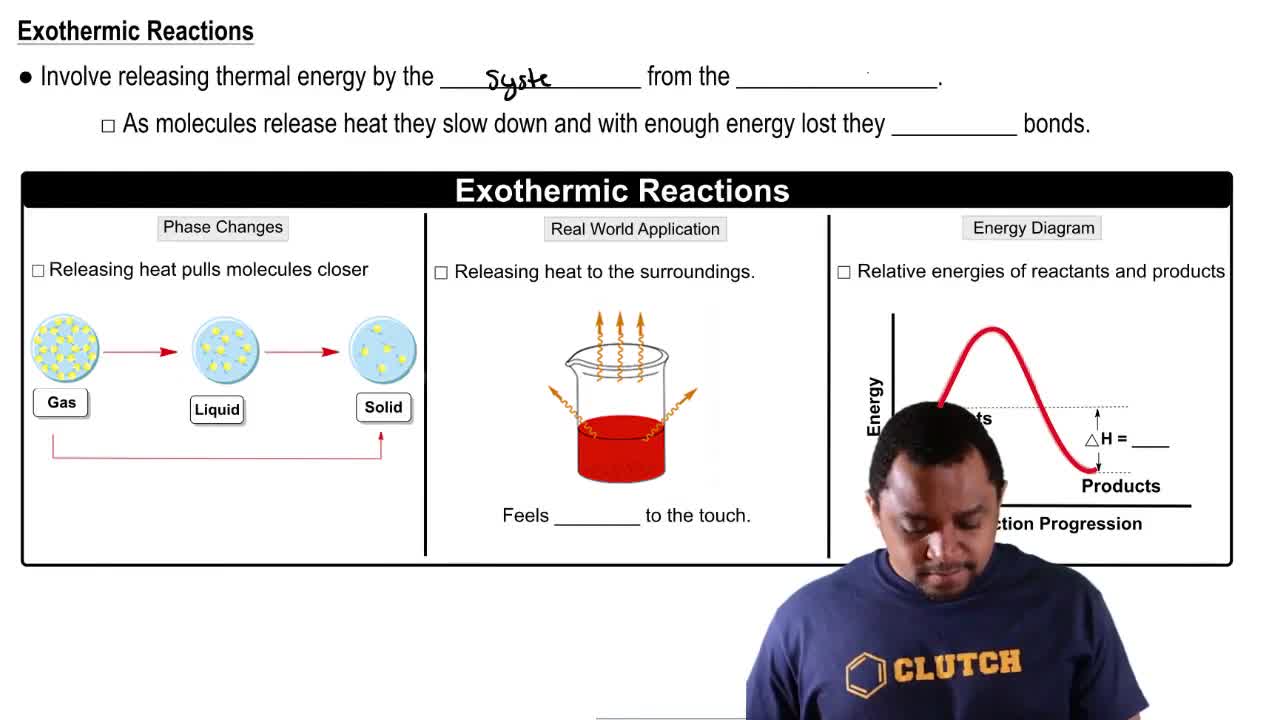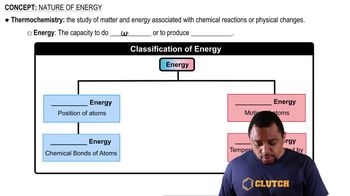Classify each of the following as exothermic or endothermic:
b. In the body, the synthesis of proteins requires energy.
 Verified step by step guidance
Verified step by step guidance Verified video answer for a similar problem:
Verified video answer for a similar problem:


 2:30m
2:30mMaster Endothermic & Exothermic Reactions with a bite sized video explanation from Jules
Start learning